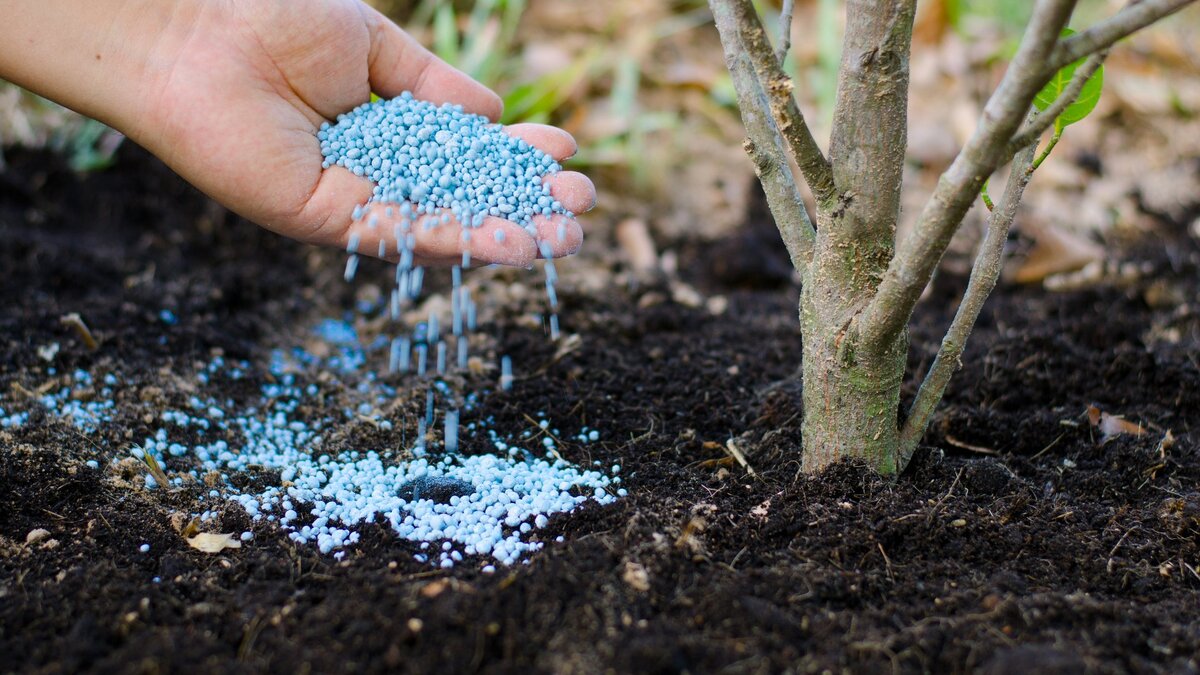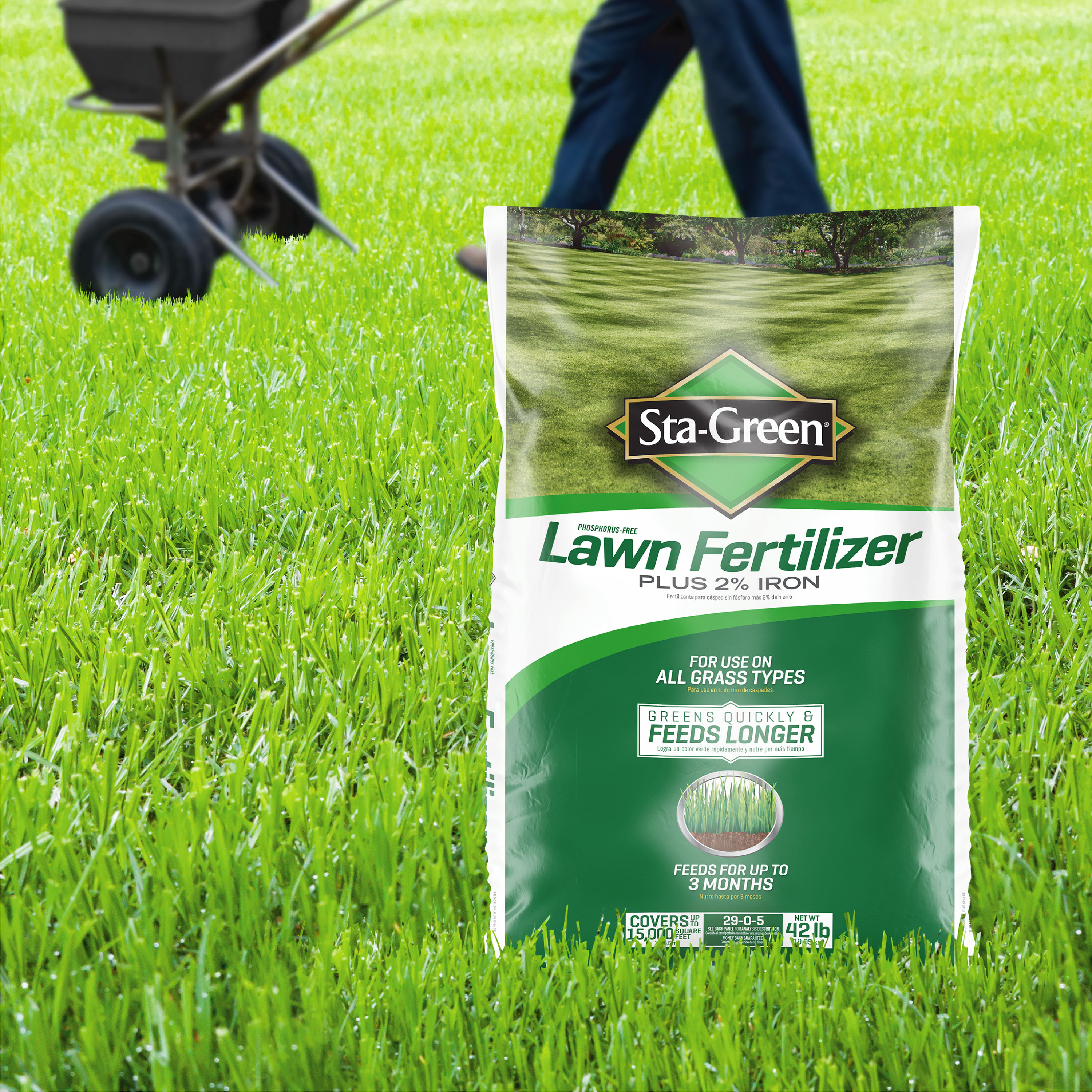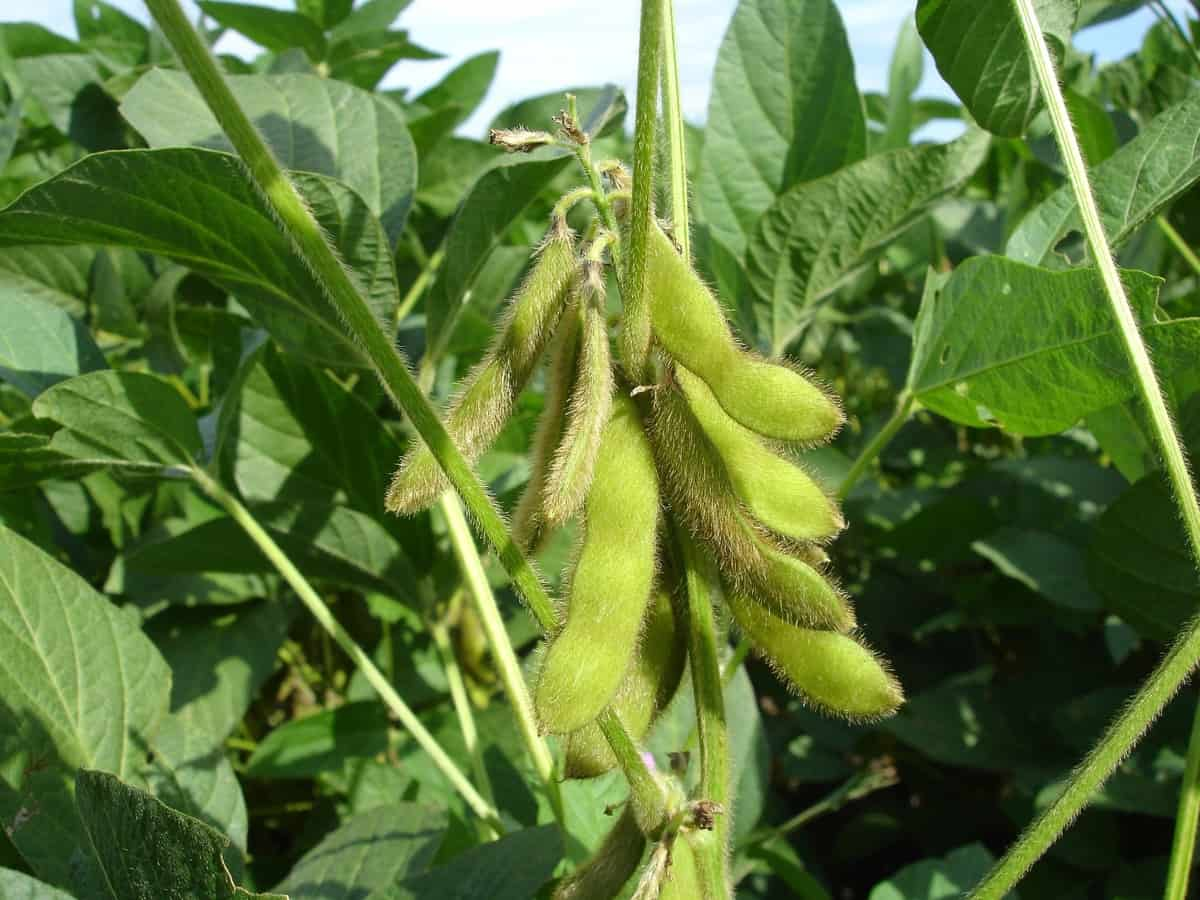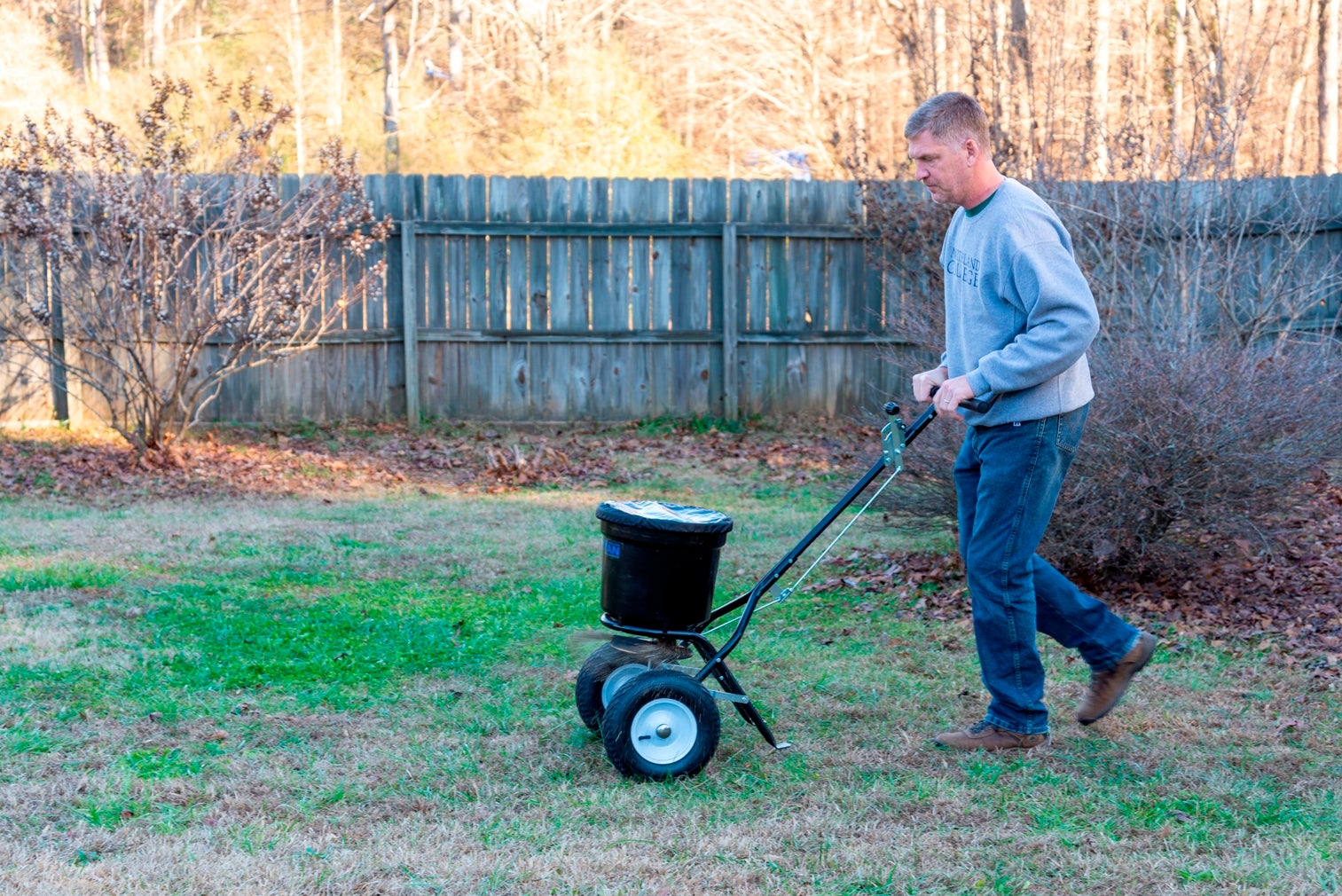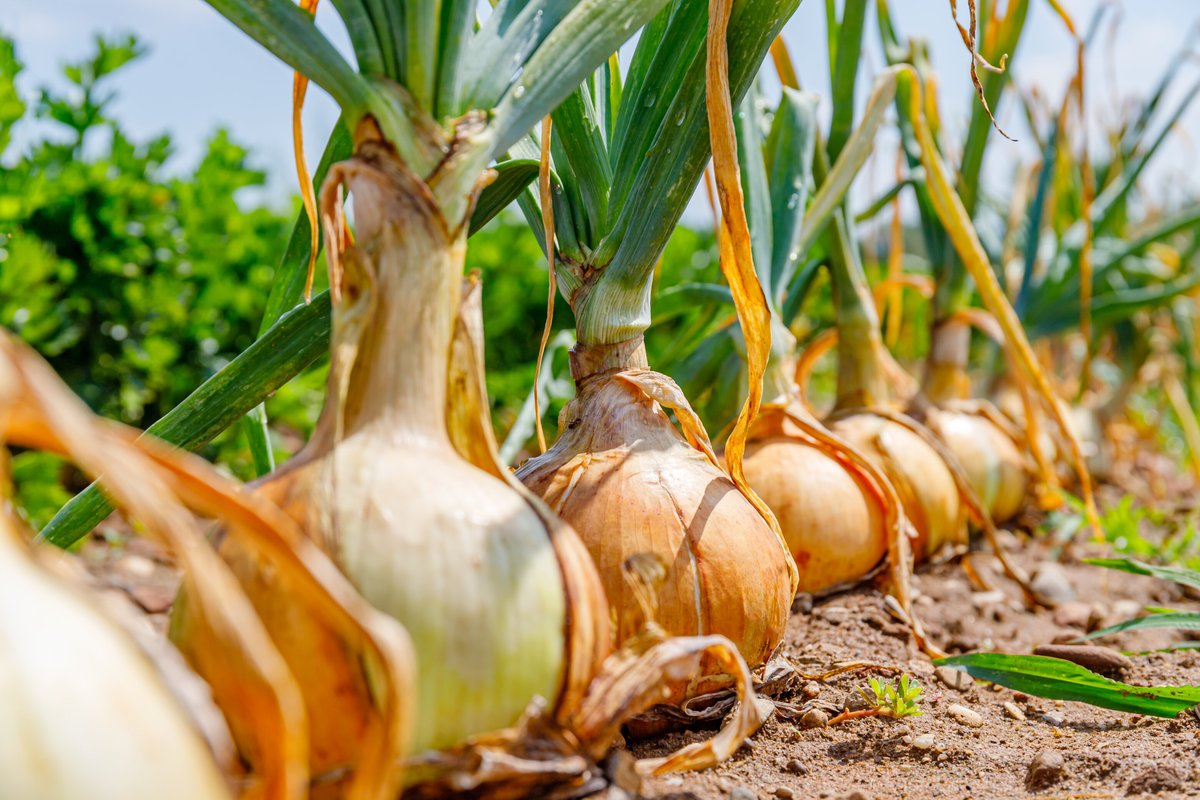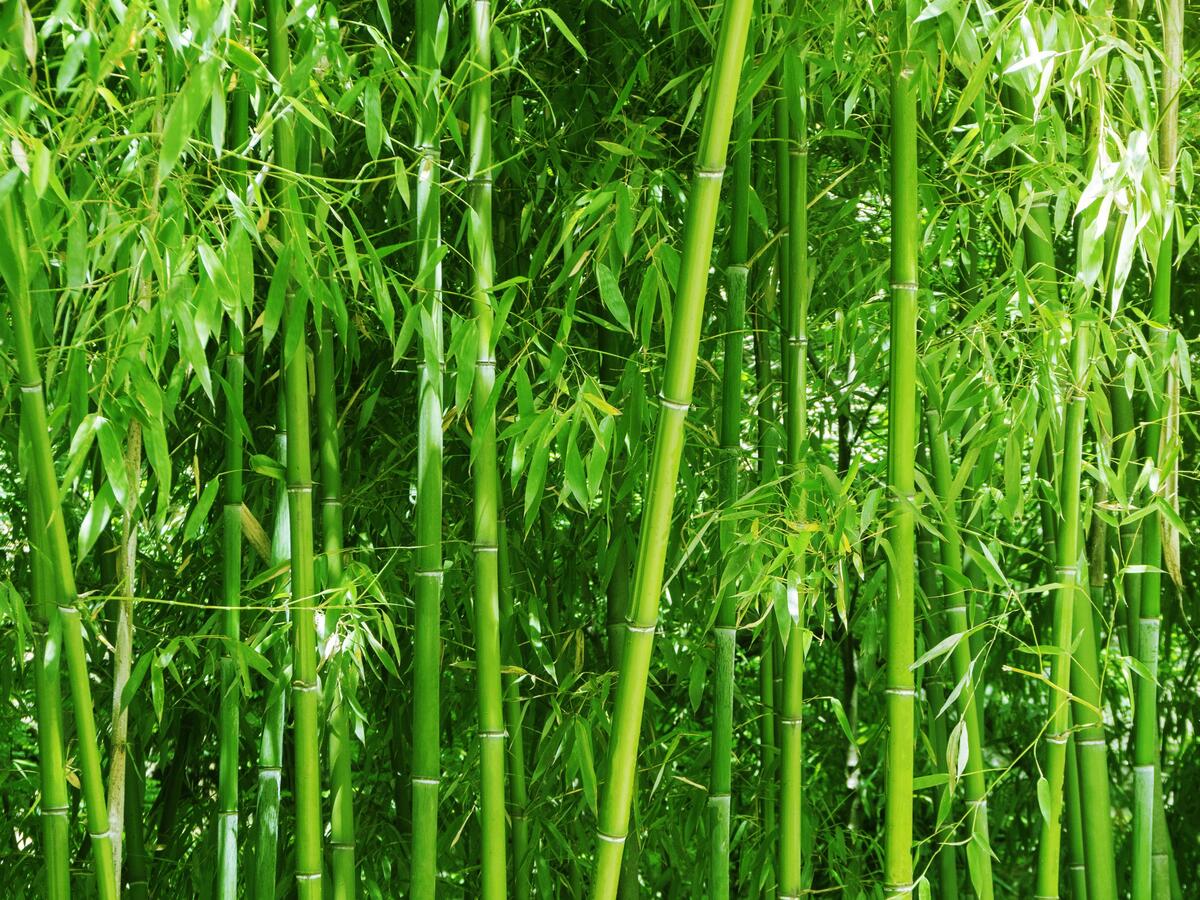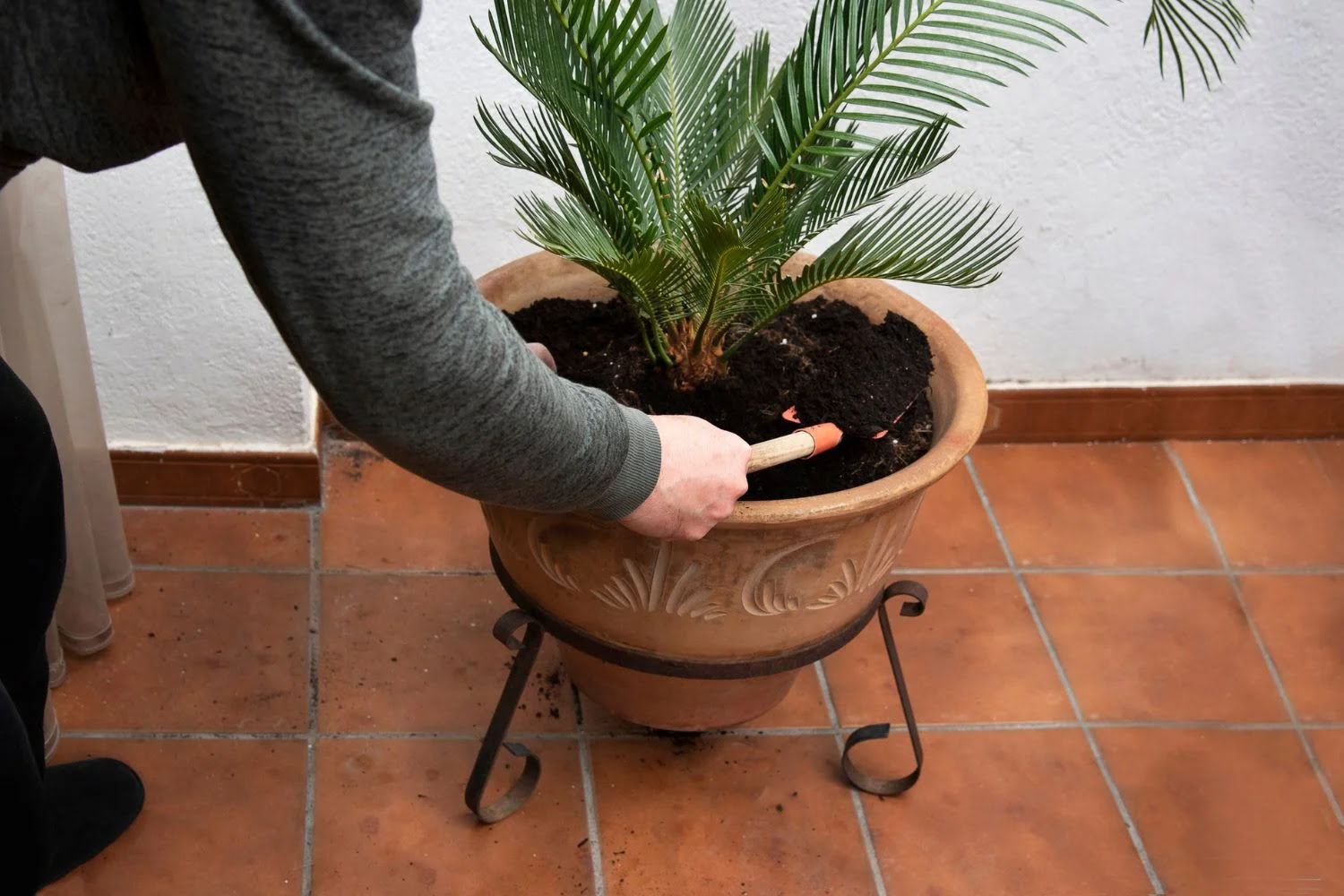Home>Types of Gardening>Edible Gardening>What Is The Best Fertilizer For Pomegranate Trees
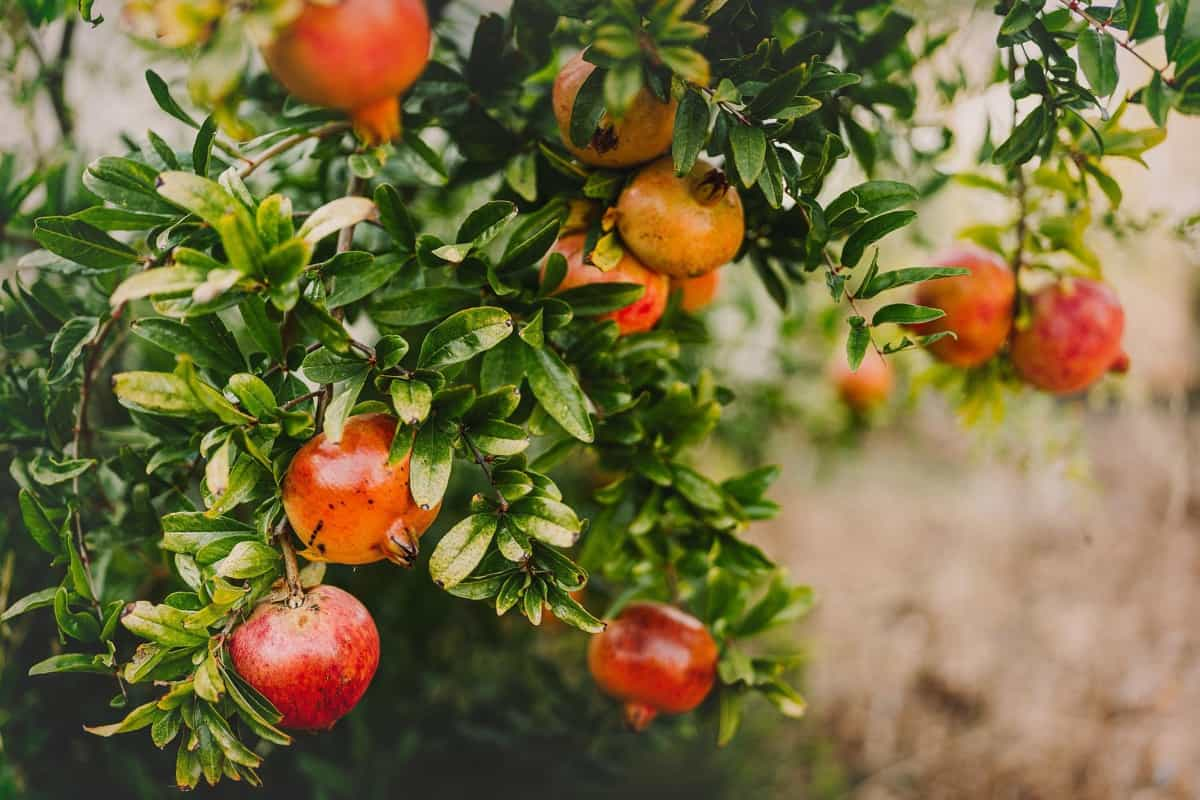

Edible Gardening
What Is The Best Fertilizer For Pomegranate Trees
Modified: January 22, 2024
Discover the best fertilizer for pomegranate trees and enhance your edible gardening. Find expert tips and advice for optimal growth and delicious fruit harvest.
(Many of the links in this article redirect to a specific reviewed product. Your purchase of these products through affiliate links helps to generate commission for Chicagolandgardening.com, at no extra cost. Learn more)
Table of Contents
- Introduction
- Understanding Pomegranate Trees
- Importance of Using Fertilizer for Pomegranate Trees
- Factors to Consider when Choosing Fertilizer for Pomegranate Trees
- Popular Types of Fertilizer for Pomegranate Trees
- Organic Fertilizers for Pomegranate Trees
- Inorganic Fertilizers for Pomegranate Trees
- Best Fertilizers for Promoting Fruit Production in Pomegranate Trees
- Best Fertilizers for Promoting Overall Tree Health in Pomegranate Trees
- Application Techniques for Fertilizing Pomegranate Trees
- Timing and Frequency of Fertilizer Application for Pomegranate Trees
- Precautions and Tips for Fertilizing Pomegranate Trees
- Conclusion
Introduction
Welcome to the world of edible gardening! If you have a passion for growing your own delicious and nutritious food, then you’ve come to the right place. In this article, we will explore the wonderful world of pomegranate trees and how to choose the best fertilizer to ensure optimal growth and abundant fruit production.
Pomegranate trees are not only beautiful additions to any garden or landscape, but they also offer a bounty of flavorful and antioxidant-rich fruits. These deciduous trees are native to regions with a Mediterranean climate and are well-suited for growing in temperate climates with hot, dry summers and mild winters.
However, like any living organism, pomegranate trees require proper care and nutrition to thrive. Fertilization plays a crucial role in providing essential nutrients that are necessary for robust foliage, healthy root development, and, most importantly, the production of vibrant and juicy pomegranate fruits.
Choosing the right fertilizer for your pomegranate trees can be a daunting task with the multitude of options available on the market. Organic or inorganic? Slow-release or water-soluble? Nitrogen-rich or balanced? The choices can seem overwhelming, but fear not! This article will guide you through the factors to consider when selecting the best fertilizer for your pomegranate trees, as well as provide recommendations for fertilizers that promote both fruit production and overall tree health.
So, whether you are a seasoned gardener looking to optimize your pomegranate tree’s potential or a beginner eager to embark on your edible gardening journey, read on to discover the strategies and tips for fertilizing your pomegranate trees with confidence and success.
Understanding Pomegranate Trees
Before we delve into the world of fertilizers for pomegranate trees, it is essential to have a basic understanding of these remarkable fruit-bearing plants.
Pomegranate trees, scientifically known as Punica granatum, are deciduous shrubs or small trees that can reach a height of 20 to 30 feet. They belong to the family Lythraceae and are widely cultivated around the world for their enticing fruits and attractive flowers.
The pomegranate fruit is renowned for its sweet and tangy taste, as well as its numerous health benefits. It is packed with antioxidants, vitamins (such as vitamin C and vitamin K), and minerals (including potassium and calcium). The vibrant ruby-red arils, encapsulated by a thick outer skin, contain an abundance of juice-filled sacs that make this fruit a culinary delight.
When it comes to their growth and care, pomegranate trees prefer full sun exposure, well-drained soil, and a warm climate. They are adaptable to various soil types, including sandy or loamy soils. However, make sure the soil has good drainage, as pomegranate trees are susceptible to root rot in poorly drained areas.
As far as their climate requirements go, pomegranate trees thrive in USDA hardiness zones 7 to 10. They can withstand hot summers and mild winters but may require protection (such as mulching or covering) in areas with freezing temperatures.
Pomegranate trees are self-pollinating, meaning they do not rely on cross-pollination with other trees to produce fruit. However, having multiple trees in close proximity can increase fruit set and yield. The flowering season begins in late spring to early summer, with striking orange-red flowers that attract bees and other pollinators.
Now that we have a basic understanding of pomegranate trees, let us explore the importance of using fertilizers to ensure their optimal growth and fruit production.
Importance of Using Fertilizer for Pomegranate Trees
Fertilizers play a crucial role in promoting the health and productivity of pomegranate trees. While these trees are resilient and can tolerate various conditions, providing them with the right nutrients through fertilization ensures optimal growth and abundant fruit production.
One of the key reasons for using fertilizer is to replenish essential nutrients in the soil. As pomegranate trees grow and produce fruit, they extract nutrients from the soil, gradually depleting its nutrient content. Without proper fertilization, nutrient deficiencies can occur, leading to stunted growth, yellowing leaves, and reduced fruit yield. Fertilizers provide a convenient and efficient way to supply the necessary nutrients, ensuring a healthy and thriving tree.
In addition to nutrient replenishment, fertilizers can also improve soil fertility, structure, and moisture retention. Organic fertilizers, such as compost or well-rotted manure, can enhance soil fertility by adding organic matter and beneficial microorganisms. This improves soil structure, allowing for better root development and nutrient uptake. Furthermore, fertilizers can help the soil retain moisture, preventing water stress and promoting overall tree health.
Fertilizers can also have a significant impact on the size, quality, and flavor of the pomegranate fruits. Certain nutrients, such as potassium and phosphorus, are known to enhance fruit development and improve fruit characteristics. Potassium, for example, contributes to the sweetness and color of the fruits, while phosphorus supports root growth and overall plant vigor. By providing the right balance of nutrients through fertilization, you can enjoy larger, juicier, and more flavorful pomegranate fruits.
Another crucial aspect of using fertilizers is their ability to boost the tree’s immune system and resilience against pests and diseases. A well-nourished pomegranate tree is better equipped to fend off attacks from pests and diseases, as it has the energy and resources to maintain strong defenses. Fertilizers that contain micronutrients, such as zinc, manganese, and copper, can improve the tree’s immune response, reducing the risk of infections and ensuring long-term tree health.
Overall, fertilization is vital for pomegranate trees to reach their full potential. It provides the necessary nutrients for growth, improves soil fertility and structure, enhances fruit quality, and strengthens the tree’s immune system. By incorporating fertilization into your pomegranate tree care routine, you can enjoy healthy and thriving trees that yield bountiful harvests of juicy and delicious fruits.
Factors to Consider when Choosing Fertilizer for Pomegranate Trees
Choosing the right fertilizer for your pomegranate trees is essential to ensure they receive the necessary nutrients for optimal growth and fruit production. Consider the following factors when selecting a fertilizer:
1. Nutrient Composition: Pomegranate trees have specific nutrient requirements. Look for a fertilizer that provides a balanced mix of nitrogen (N), phosphorus (P), and potassium (K). Nitrogen promotes leaf and stem growth, phosphorus supports root development, and potassium is crucial for fruit production and overall plant health.
2. Slow-Release vs. Water-Soluble: Fertilizers come in various forms, including slow-release and water-soluble. Slow-release fertilizers provide a steady and slow release of nutrients over time, requiring less frequent application. Water-soluble fertilizers, on the other hand, dissolve in water and provide an immediate nutrient boost. Consider your preference and the specific needs of your pomegranate trees when choosing between these options.
3. Organic vs. Inorganic: Another consideration is whether to opt for organic or inorganic fertilizers. Organic fertilizers are derived from natural sources, such as compost or animal manure. They contribute to soil health and are environmentally friendly. Inorganic fertilizers, also known as synthetic or chemical fertilizers, are manufactured to provide specific nutrient ratios. They offer quick and precise nutrient uptake but may have a detrimental impact on soil health and the environment.
4. Soil Analysis: Conducting a soil analysis can provide valuable insights into the nutrient deficiencies or imbalances in your soil. This information can help determine the type and quantity of fertilizer needed to optimize nutrient levels. Soil tests are available through local agricultural extension offices or private labs.
5. Micronutrients: Pomegranate trees may require additional micronutrients, such as iron, zinc, or manganese, to thrive. Some fertilizers include these micronutrients, while others may require separate applications. Consider the specific needs of your pomegranate trees and choose a fertilizer that addresses those requirements.
6. pH levels: Pomegranate trees prefer a slightly acidic to neutral soil pH ranging from 5.5 to 7.0. Fertilizers can impact soil pH, so take into account the pH requirements of pomegranate trees when selecting a fertilizer. Lime or sulfur additives can be used to adjust soil pH if necessary.
7. Environmental Impact: Consider the environmental impact of the fertilizer you choose. Opt for fertilizers that minimize nutrient runoff and potential harm to surrounding ecosystems. Follow the recommended application rates and timing to avoid over-fertilization.
By considering these factors, you can select a fertilizer that meets the specific needs of your pomegranate trees, ensuring they receive the right balance of nutrients for healthy growth and abundant fruit production. Remember to follow the instructions provided by the fertilizer manufacturer for proper application and timing.
Popular Types of Fertilizer for Pomegranate Trees
Choosing the right type of fertilizer for your pomegranate trees is essential to ensure they receive the necessary nutrients for optimal growth and fruit production. Here are some popular types of fertilizers commonly used for pomegranate trees:
1. Compost: Compost is a natural, organic fertilizer that provides a rich source of nutrients, improves soil structure, and enhances moisture retention. It is made from a mixture of organic materials, such as kitchen scraps, yard waste, and manure, which decompose over time. Compost can be applied as a top dressing or incorporated into the soil.
2. Well-Rotted Manure: Similar to compost, well-rotted manure is an organic fertilizer that enriches the soil with essential nutrients. It is best to use aged or well-rotted manure to avoid potential weed seeds or pathogens. Apply a layer of well-rotted manure around the base of the tree, taking care not to apply it too close to the trunk to prevent root rot.
3. Commercial Organic Fertilizers: There are several commercially available organic fertilizers specifically formulated for fruit trees, including pomegranates. These fertilizers often contain a balanced mix of nutrients, beneficial microorganisms, and organic matter. They can be applied according to the manufacturer’s instructions and provide a convenient option for promoting overall tree health and fruit production.
4. Slow-Release Fertilizers: Slow-release fertilizers, also known as controlled-release fertilizers, provide a steady release of nutrients over an extended period. These fertilizers contain coated granules or pellets that slowly break down, delivering nutrients to the tree’s roots consistently. Slow-release fertilizers reduce the risk of nutrient leaching and eliminate the need for frequent applications.
5. Water-Soluble Fertilizers: Water-soluble fertilizers are highly soluble in water and provide an immediate supply of nutrients. They are typically applied by dissolving them in water and then watering the trees. Water-soluble fertilizers are convenient for providing quick nutrient boosts, especially during periods of rapid growth or fruit development.
6. Synthetic or Inorganic Fertilizers: Synthetic fertilizers are manufactured and contain specific nutrient ratios. They are often labeled with three numbers representing the percentage of nitrogen (N), phosphorus (P), and potassium (K) they contain. Synthetic fertilizers provide precise nutrient availability and are usually water-soluble for easy application. However, they may have negative impacts on soil health and the environment when overused or misapplied.
Remember to carefully follow the instructions on the fertilizer packaging for proper application rates and timing. It’s also essential to monitor your pomegranate trees’ response to fertilization and make adjustments as needed. By using the right type of fertilizer, you can provide your pomegranate trees with the nutrients they need to thrive and produce an abundant harvest of delicious fruits.
Organic Fertilizers for Pomegranate Trees
Organic fertilizers offer a natural and environmentally friendly option for nourishing your pomegranate trees. These fertilizers are derived from organic materials and provide a range of essential nutrients, beneficial microorganisms, and organic matter. Here are some popular organic fertilizers commonly used for pomegranate trees:
1. Compost: Compost is a nutrient-rich soil amendment made from decomposed organic matter, such as kitchen scraps, yard waste, and plant materials. It improves soil structure, enhances moisture retention, and provides a slow-release source of essential nutrients. Apply a layer of compost around the base of the tree, making sure to leave a gap around the trunk to prevent rot.
2. Well-Rotted Manure: Well-rotted manure is a traditional organic fertilizer that provides valuable nutrients and improves soil fertility. It is essential to use aged or well-rotted manure to avoid weed seeds or harmful pathogens. Apply a layer of well-rotted manure around the base of the tree, ensuring it does not come into direct contact with the trunk.
3. Bone Meal: Bone meal is a natural fertilizer made from ground-up animal bones. It is rich in phosphorus, which is crucial for promoting root development and fruit production in pomegranate trees. Bone meal can be mixed into the soil prior to planting or applied as a top dressing around the tree’s drip line.
4. Fish Emulsion: Fish emulsion is an organic liquid fertilizer made from fermented fish. It is rich in nitrogen, which supports leaf and stem growth in pomegranate trees. Fish emulsion can be diluted with water and applied as a foliar spray or incorporated into the soil during watering.
5. Seaweed Extract: Seaweed extract is derived from seaweeds and is a popular organic fertilizer for its high concentration of plant growth hormones, trace minerals, and beneficial microbes. It promotes overall plant health, increases tolerance to stress, and enhances fruit development. Seaweed extract can be applied as a foliar spray or added to the soil during watering.
6. Organic Pelleted Fertilizers: Organic pelleted fertilizers are convenient to use and provide a slow-release source of nutrients. They contain organic materials, such as compost, bone meal, and blood meal, compressed into small pellets. These pellets break down gradually, releasing nutrients over time. Follow the instructions on the fertilizer packaging for proper application rates and timing.
When using organic fertilizers, it’s important to note that they may not provide an immediate nutrient boost compared to synthetic fertilizers. However, they contribute to long-term soil health, improve microbial activity, and promote sustainable gardening practices. Organic fertilizers are also safer for beneficial insects, wildlife, and the environment as a whole.
Remember to consider your pomegranate tree’s specific nutrient requirements and monitor their response to fertilization. By using organic fertilizers, you can provide your pomegranate trees with natural and wholesome nutrition while promoting a healthy and sustainable gardening approach.
Inorganic Fertilizers for Pomegranate Trees
Inorganic fertilizers, also known as synthetic or chemical fertilizers, are manufactured products designed to provide essential nutrients to pomegranate trees. While organic fertilizers offer a natural and environmentally friendly option, inorganic fertilizers can provide precise and immediate nutrient availability. Here are some common types of inorganic fertilizers used for pomegranate trees:
1. Complete NPK Fertilizers: Complete NPK fertilizers contain a balanced mix of nitrogen (N), phosphorus (P), and potassium (K), labeled with three numbers representing the percentage of each nutrient. These fertilizers are formulated to deliver a specific nutrient ratio suitable for promoting overall tree growth and fruit production. Complete NPK fertilizers can be water-soluble or granular.
2. Urea: Urea is a nitrogen-rich fertilizer that provides a quick-release source of nitrogen to pomegranate trees. It is highly soluble and is often used to promote lush leaf and stem growth. Urea is usually applied as a top dressing or dissolved in water and applied as a foliar spray. However, it is important to be cautious with urea application to avoid leaf burn or nitrogen overload.
3. Superphosphate: Superphosphate is a phosphorus-rich fertilizer that aids in root development and fruit production. It is available in granular form and provides an immediate source of phosphorus. Superphosphate is typically applied during tree establishment or as a top dressing around existing trees.
4. Potash Fertilizers: Potash fertilizers are rich in potassium, an essential nutrient for fruit quality and overall tree health. They are available in water-soluble or granular form. Potassium promotes fruit development, enhances color and flavor, and increases the tree’s ability to resist pests and diseases.
5. Micronutrient Fertilizers: Micronutrient fertilizers contain essential trace elements required in small quantities for healthy growth and development. They include nutrients such as iron, zinc, manganese, and copper. These fertilizers are usually applied as foliar sprays or incorporated into the soil when necessary based on soil or leaf tissue analysis.
When using inorganic fertilizers, it is crucial to follow the manufacturer’s instructions regarding application rates and timing. Care should be taken to avoid over-fertilization, as this can lead to nutrient imbalances, environmental pollution, and damage to the tree’s health.
While inorganic fertilizers offer quick nutrient availability and precise nutrient ratios, they may not enhance soil health or promote long-term sustainability as effectively as organic fertilizers. It’s important to strike a balance between using inorganic fertilizers for immediate nutrient needs and incorporating organic practices to improve soil fertility and microbial activity.
Remember to monitor your pomegranate tree’s response to inorganic fertilizer applications and make adjustments as needed. Regular soil testing and leaf tissue analysis can help guide your fertilization efforts and ensure the tree receives the necessary nutrients for optimal growth and productive fruiting.
Best Fertilizers for Promoting Fruit Production in Pomegranate Trees
Promoting robust fruit production is a top priority when fertilizing pomegranate trees. The following fertilizers are highly effective in providing the necessary nutrients to support fruit development, size, and flavor:
1. Potassium-Rich Fertilizers: Fertilizers with a higher percentage of potassium, such as those labeled as potash fertilizers, are excellent for promoting fruit production in pomegranate trees. Potassium plays a vital role in enhancing fruit size, color, and flavor. Look for fertilizers with a high potassium (K) content, typically indicated by the third number on the label (e.g., 10-10-20).
2. Phosphorus-Rich Fertilizers: Phosphorus is crucial for root development and overall plant vigor, which directly impacts the production of healthy and abundant pomegranate fruits. Fertilizers enriched with phosphorus, including superphosphate, are beneficial for promoting strong root systems and improving fruit quality.
3. Nutrient-Rich Organic Fertilizers: Organic fertilizers, such as compost and well-rotted manure, provide a diverse range of macro and micronutrients that contribute to fruit production. The slow-release nature of organic fertilizers ensures a steady supply of nutrients throughout the growing season. Applying compost or well-rotted manure as a top dressing around the base of the tree is a beneficial strategy.
4. Slow-Release Fertilizers: Slow-release fertilizers are particularly advantageous for sustaining steady nutrient release and promoting continuous fruit production. They are available in granular form, and the nutrients are slowly released over an extended period. Slow-release fertilizers reduce the risk of nutrient leaching and minimize the need for frequent reapplication.
5. Balanced NPK Fertilizers: Fertilizers with a balanced ratio of nitrogen (N), phosphorus (P), and potassium (K) support overall tree health and promote consistent fruit development. Look for fertilizers labeled with similar percentages of NPK (e.g., 12-12-12 or 14-14-14) to ensure a well-rounded nutrient supply for pomegranate trees.
6. Foliar Fertilizers: Foliar fertilizers, applied as sprays directly onto the leaves, can be an effective method to deliver nutrients directly to the fruiting parts of pomegranate trees. These fertilizers are quickly absorbed by the leaves, facilitating nutrient uptake. Follow the manufacturer’s instructions for proper dilution and application rates.
Remember to consider the specific nutrient requirements of your pomegranate trees and adjust fertilization based on any soil or leaf tissue analyses. It is important to apply fertilizers at the appropriate time and frequency, following the instructions provided by the fertilizer manufacturer.
Furthermore, maintaining proper irrigation, pruning, and pest management practices in conjunction with a balanced fertilization regime will help ensure optimal fruit production in your pomegranate trees. Regular monitoring and timely adjustments to your fertilization program will help achieve the best results and a bountiful harvest of delicious pomegranate fruits.
Best Fertilizers for Promoting Overall Tree Health in Pomegranate Trees
Promoting overall tree health is essential for the vitality and longevity of pomegranate trees. Here are some of the best fertilizers to support the well-being of your pomegranate trees:
1. Organic Matter: Incorporating organic matter such as compost, well-rotted manure, and leaf mulch into the soil provides a multitude of benefits for tree health. Organic matter improves soil structure, enhances moisture retention, encourages beneficial microbial activity, and increases nutrient availability. Regular applications of organic matter help nourish the tree and promote its overall health.
2. Complete Organic Fertilizers: Complete organic fertilizers, specifically formulated for fruit trees, offer a balanced mix of macronutrients and micronutrients necessary for overall tree health. These fertilizers often contain a blend of compost, bone meal, and other organic ingredients in appropriate ratios. They provide a comprehensive nutrient supply and contribute to the long-term well-being of pomegranate trees.
3. Slow-Release Fertilizers: Slow-release fertilizers provide a steady and continuous release of nutrients over an extended period. This gradual nutrient release promotes sustained growth, strengthens root systems, and reduces the risk of nutrient leaching. Slow-release fertilizers are beneficial for maintaining overall tree health and vitality.
4. Micronutrient Fertilizers: Micronutrients are essential for pomegranate tree health, even if required in small quantities. Fertilizers containing micronutrients such as iron, zinc, manganese, and copper can help prevent nutrient deficiencies and enhance tree vigor. These nutrients support important functions such as photosynthesis, enzyme activation, and disease resistance.
5. Mycorrhizal Fungi: Mycorrhizal fungi form a symbiotic relationship with tree roots, facilitating nutrient uptake and enhancing overall tree health. Applying mycorrhizal inoculants or using mycorrhizal-rich compost can introduce these beneficial fungi to the soil, improving nutrient absorption and root development in pomegranate trees.
6. Soil Amendments: Soil amendments, such as gypsum or agricultural lime, can be used to address specific soil deficiencies or imbalances. For example, gypsum can help improve soil drainage in heavy clay soils, while lime can be used to adjust soil pH if it is too acidic. These amendments, when used appropriately based on soil tests, can contribute to overall tree health.
Remember to carefully follow the instructions provided by the fertilizer manufacturer when applying fertilizers and soil amendments. Regular monitoring and observation of tree health will help identify any nutrient deficiencies or imbalances and allow for timely adjustments to the fertilization program. Proper irrigation, mulching, and pest management practices should also be implemented to support the overall health of your pomegranate trees.
By providing the necessary nutrients and fostering optimal growing conditions, you can ensure the vigor and longevity of your pomegranate trees, allowing them to thrive and produce an abundance of delicious fruits.
Application Techniques for Fertilizing Pomegranate Trees
Fertilizing pomegranate trees requires proper application techniques to ensure efficient nutrient delivery and minimize potential damage to the tree. Here are some recommended techniques for fertilizing pomegranate trees:
1. Soil Incorporation: One common method is to incorporate granular or powdered fertilizers directly into the soil. This technique involves evenly spreading the fertilizer around the tree’s drip line, which is the outermost reach of the branches. Use a garden fork or rake to lightly work the fertilizer into the topsoil. Be cautious not to damage the tree’s shallow roots during this process.
2. Top Dressing: Top dressing involves applying fertilizers as a layer on the soil surface around the tree. Carefully distribute the fertilizer, avoiding direct contact with the tree trunk. After applying the fertilizer, lightly scratch it into the top layer of soil with a rake, and then water the area thoroughly to stimulate nutrient absorption.
3. Foliar Sprays: Foliar sprays involve applying a liquid fertilizer directly to the leaves of the pomegranate tree. This technique enables the tree to absorb nutrients through its foliage. Dilute the liquid fertilizer according to the manufacturer’s instructions and apply it with a garden sprayer, ensuring complete coverage of the leaves. Apply foliar sprays during cooler periods of the day to minimize evaporation and enhance absorption.
4. Deep Root Feeding: Deep root feeding is a method that delivers fertilizers directly to the tree’s root zone. This technique requires using a fertilizer probe or deep root feeding device to inject liquid or granular fertilizers into the soil. Insert the probe at least 6 to 12 inches deep into the soil around the drip line, and apply the fertilizer following the manufacturer’s instructions. This method facilitates nutrient uptake by the tree’s root system.
5. Mulching: While not a direct method of fertilizer application, mulching can be used in conjunction with fertilization to maximize the tree’s nutrient uptake. Apply a layer of organic mulch, such as wood chips or straw, around the base of the tree. Mulching helps conserve soil moisture, suppress weed growth, and gradually release nutrients into the soil as it decomposes.
Remember to follow the instructions provided by the fertilizer manufacturer regarding application rates, frequency, and timing. It is essential to provide adequate water after applying fertilizers to facilitate nutrient absorption by the pomegranate tree’s roots.
Regular monitoring and observation of the tree’s growth and appearance can help determine if further fertilization is needed. Adjust the fertilization program based on soil tests, leaf tissue analysis, and the specific requirements of your pomegranate trees.
Applying fertilizers correctly and employing appropriate techniques will ensure that your pomegranate trees receive the necessary nutrients for optimal growth, fruit production, and overall health.
Timing and Frequency of Fertilizer Application for Pomegranate Trees
Timing and frequency of fertilizer application is crucial for providing the right nutrients to pomegranate trees at the appropriate stages of growth. Here are some guidelines to consider when determining the timing and frequency of fertilizer application for pomegranate trees:
1. Initial Fertilization: When planting a new pomegranate tree, it is important to provide an initial dose of fertilizer to support its establishment. Incorporate a balanced granular fertilizer into the planting hole or the surrounding soil. This initial fertilization helps provide essential nutrients during the early stages of growth.
2. Early Spring: Apply a balanced fertilizer, such as a 10-10-10 or 14-14-14, in early spring before the tree begins active growth. This application provides a nutrient boost to support new foliage development and overall tree health. Follow the recommended application rates provided by the fertilizer manufacturer.
3. Fruit Development Stage: As the pomegranate tree enters the fruit development stage, it requires additional nutrients to support fruit production. Apply a fertilizer with a higher potassium (K) content, such as a 0-0-50 or 0-0-60, during this period. Apply the fertilizer around the drip line, avoiding direct contact with the trunk.
4. Mid-Summer: In mid-summer, when the pomegranate fruits are well-formed, a light application of a balanced fertilizer or a slow-release fertilizer can help sustain the tree’s nutrient supply. Be cautious not to over-fertilize during this stage, as excessive nitrogen can lead to an imbalance in fruit development and delay ripening.
5. Late Fall/Winter: Avoid fertilizing pomegranate trees in late fall or winter, as they are entering dormancy. Fertilizer application during this period can stimulate new growth, which is susceptible to damage from frost or cold temperatures. It is best to wait until early spring to resume fertilization.
6. Frequency: For established pomegranate trees, applying fertilizer once or twice per year is generally sufficient. However, factors such as soil fertility, tree size, and fruit production may require more frequent applications. Monitor the tree’s growth and response to fertilization, adjusting the frequency as needed.
Remember, it is important to follow the fertilizer manufacturer’s instructions regarding application rates and timing, as different fertilizers may vary in their nutrient release rates. It is always better to slightly under-fertilize than to over-fertilize, as excessive nutrient levels can harm the tree and impact fruit quality.
In addition to regular fertilization, maintaining proper irrigation and soil moisture levels is crucial for optimal nutrient uptake. Adequate watering helps move the nutrients into the root zone where they are available for absorption by the tree.
By timing fertilizer applications appropriately and adjusting frequency based on the pomegranate tree’s growth stage and nutritional needs, you can ensure that it receives the correct nutrients at the right time, supporting healthy growth, fruit development, and overall tree vigor.
Precautions and Tips for Fertilizing Pomegranate Trees
Fertilizing pomegranate trees requires careful attention to ensure the best results and the health of the tree. Here are some precautions and tips to consider when fertilizing your pomegranate trees:
1. Read and Follow Instructions: Always carefully read and follow the instructions provided on the fertilizer packaging. The recommended application rates and timing may vary depending on the specific fertilizer you’re using. Adhering to the instructions will help prevent over-fertilization and minimize the risk of nutrient burn or damage to the tree.
2. Avoid Fertilizer Contact with Trunk: When applying fertilizer, be cautious to avoid direct contact with the tree trunk. Fertilizers can cause burns or rotting if they come into contact with the tree’s bark. Maintain a gap of a few inches between the fertilizer and the trunk to ensure optimal air circulation and prevent damage.
3. Water Thoroughly After Fertilizing: After applying fertilizers, make sure to water the area thoroughly. This helps to dissolve the fertilizer and deliver the nutrients into the root zone where they can be absorbed by the tree. Adequate watering also helps prevent nutrient runoff and leaching.
4. Avoid Over-Fertilization: Over-fertilization can be detrimental to pomegranate trees and may lead to nutrient imbalances, leaf burn, or excessive growth at the expense of fruit production. Follow the recommended application rates and avoid applying more fertilizer than necessary. Regular monitoring of the tree’s growth and response to fertilization can help determine if adjustments are needed.
5. Consider Soil pH and Nutrient Deficiencies: Conducting a soil test or leaf tissue analysis can provide valuable information about the pH of the soil and any nutrient deficiencies or imbalances in your pomegranate trees. Adjustments may be needed to correct soil pH using appropriate amendments or to address specific nutrient deficiencies through targeted fertilization.
6. Timing Matters: Timing is crucial when fertilizing pomegranate trees. Applying fertilizer at the right time, such as during the active growth phase or fruit development stage, ensures the tree receives the necessary nutrients when it needs them the most. Avoid fertilizing during periods of dormancy or extreme weather conditions.
7. Prune and Monitor for Pests and Diseases: To maintain the overall health of your pomegranate trees, it’s important to practice proper pruning techniques and regularly monitor for pests and diseases. A well-pruned tree with good airflow and minimal pest or disease pressure will be better able to utilize the nutrients provided by fertilizers.
8. Organic Fertilizers for Environmental Considerations: If you prefer a more eco-friendly approach, consider using organic fertilizers. Organic fertilizers promote sustainable gardening practices, improve soil health, and minimize environmental impact.
Remember, every pomegranate tree is unique, and factors such as soil conditions, climate, and tree age can influence its nutrient requirements. Observing the tree’s growth, appearance, and response to fertilization will help you make informed decisions and tailor your fertilization approach accordingly.
By taking these precautions and following these tips, you can effectively fertilize your pomegranate trees, ensuring their health, vigor, and optimal fruit production for many seasons to come.
Conclusion
Fertilizing pomegranate trees is crucial for promoting optimal growth, abundant fruit production, and overall tree health. By choosing the right fertilizers, considering factors such as nutrient composition, organic or inorganic options, and micronutrient requirements, you can provide your pomegranate trees with the essential nutrients they need to thrive.
Understanding the specific needs of pomegranate trees, such as their preference for full sun, well-drained soil, and a warm climate, is vital for successful fertilization. Organic fertilizers, such as compost, well-rotted manure, and fish emulsion, offer a natural and environmentally friendly option, promoting soil health and microbial activity. Inorganic fertilizers, including slow-release or water-soluble options, provide precise and immediate nutrient availability, supporting rapid growth and ongoing maintenance.
Timing and frequency of fertilizer application are key considerations. Applying fertilizers during the active growth phase, fruit development stage, and early spring ensures that pomegranate trees receive the necessary nutrients at critical times. It is important to follow the instructions provided by the fertilizer manufacturer, avoiding over-fertilization and maintaining a gap between the fertilizer and the tree trunk.
Taking precautions, such as avoiding fertilizer contact with the trunk, watering thoroughly after application, and considering soil pH and nutrient deficiencies, further enhances the success of fertilization. Monitoring tree growth, conducting soil tests, and addressing pests and diseases through proper pruning and management practices contribute to overall tree health.
By implementing these tips and techniques, you can nourish your pomegranate trees effectively, promoting their vitality, productivity, and resilience. Whether you are a seasoned gardener or a beginner, fertilizing pomegranate trees allows you to enjoy the beauty of these trees while reaping the rewards of delicious and nutritious fruits. Happy gardening!
